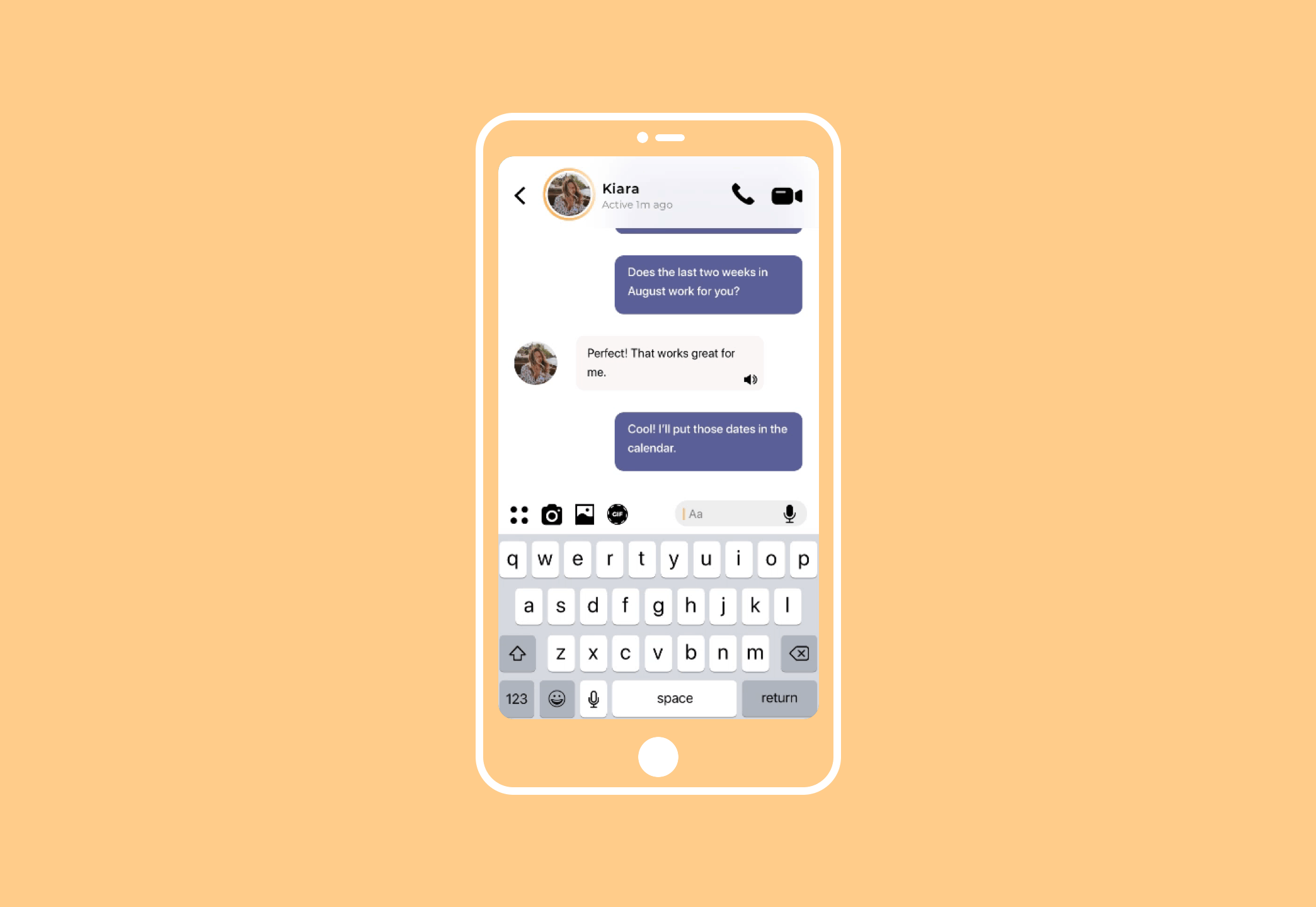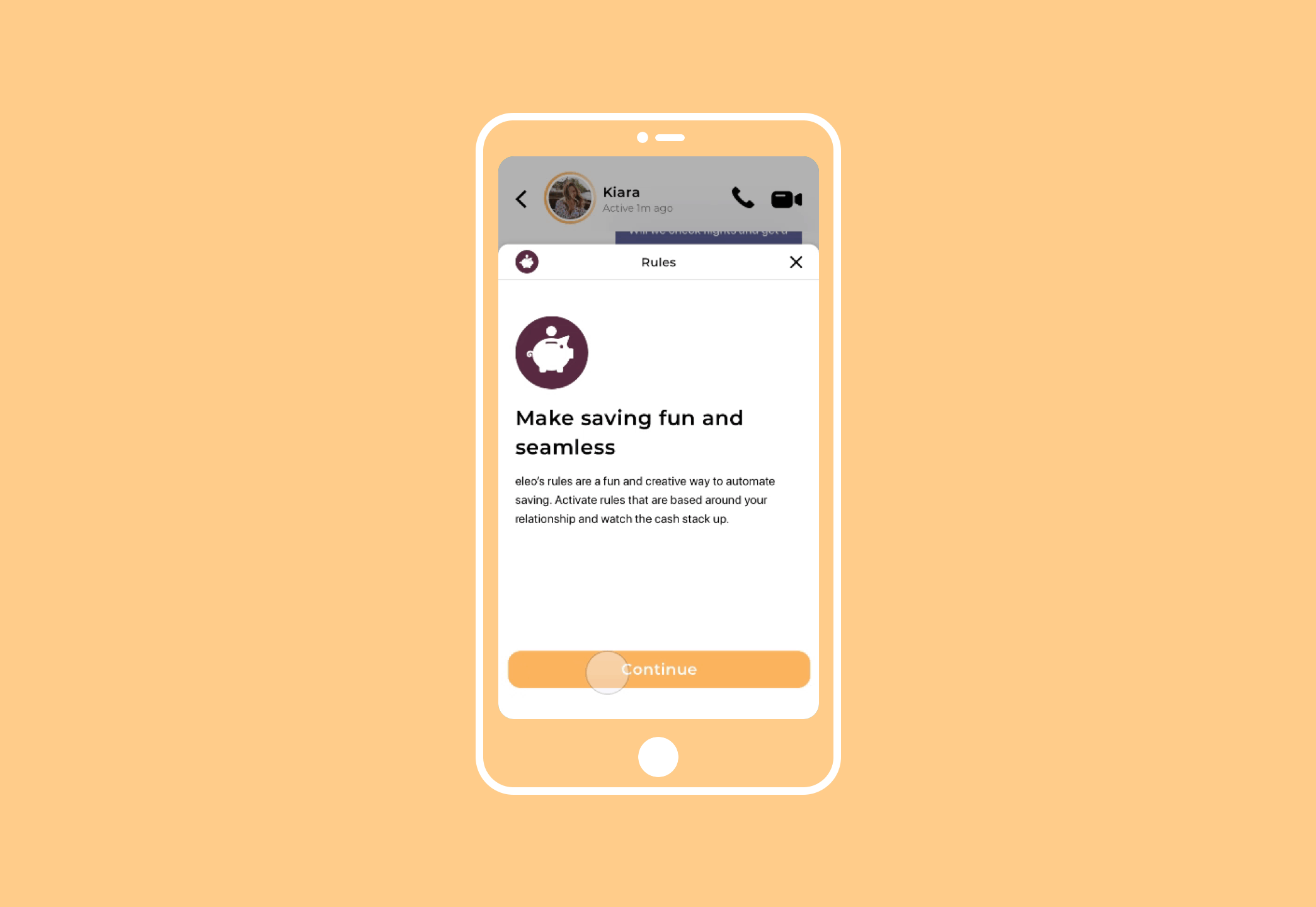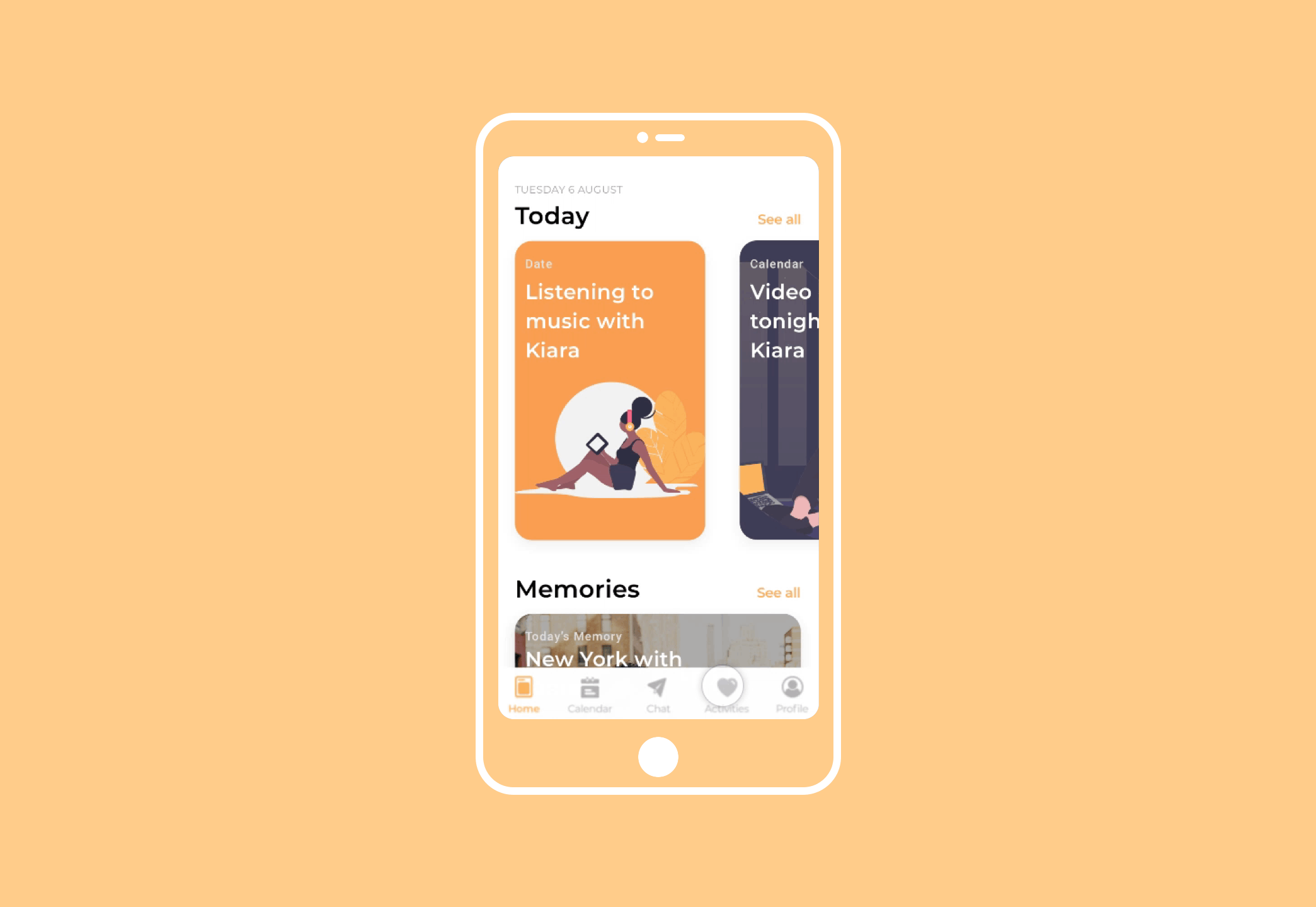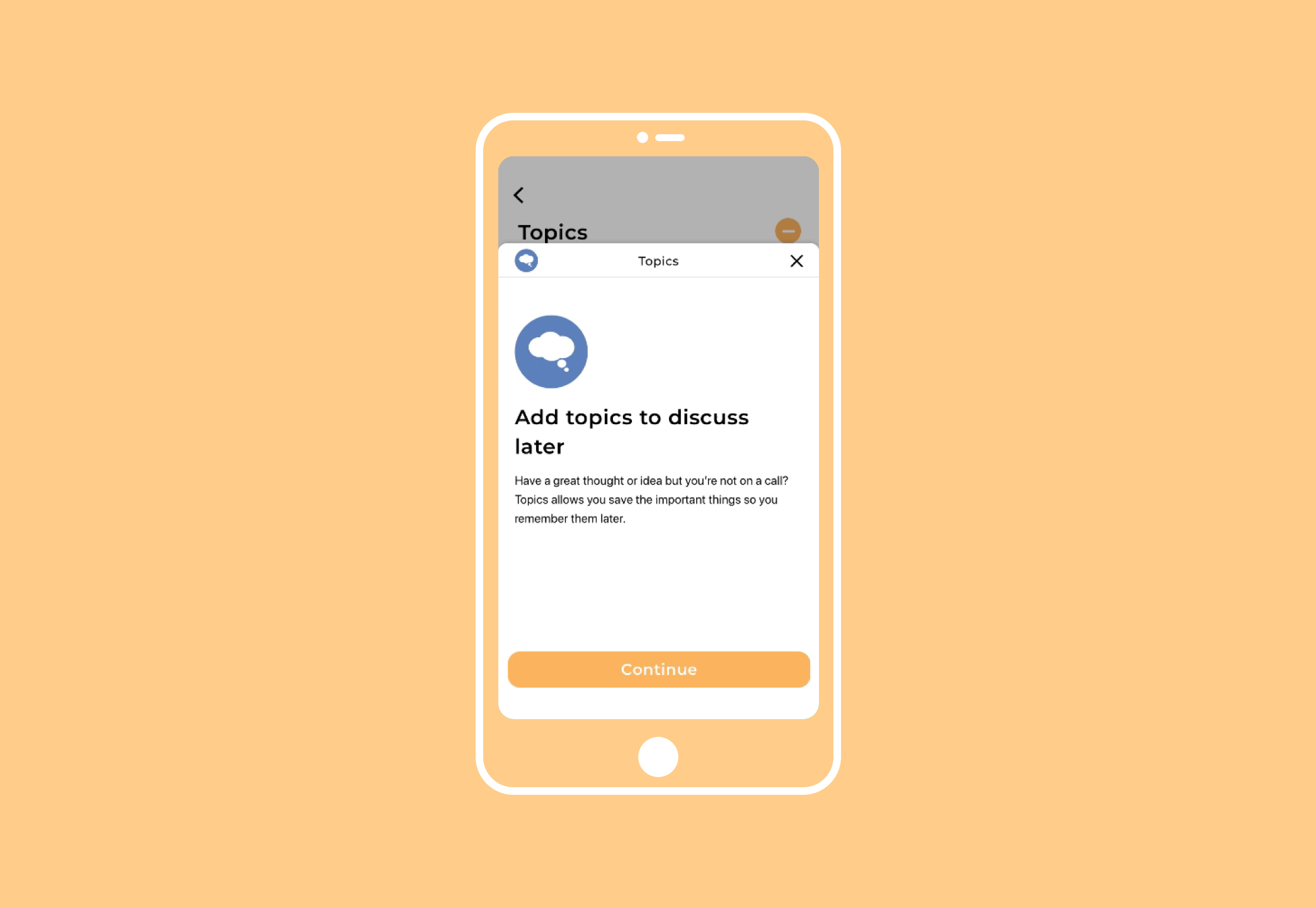Eleo - Social Messaging for Long Distance Relationships
An animation of ambient design.
PROJECT BACKGROUNd
This project is my thesis for The Masters Program in Kingston University that I attended in 2018/2019. Eleo, the name of the product created, is a social messaging application targeted at people that are in intimate long distance relationships. The product has features that help maintain and grow relationships between people who are geographically separated.
I used the ‘Design Thinking’ process for this project. I was responsible for conducted all modes of the Design Thinking process. This included the initial research, both primary and secondary. It also included co-design activities and brainstorming before rapid iterations of prototyping and testing.
The problem
Research suggests that maintaining and growing relationships that are geographically separated is very difficult. Problems such as time conflicts in time zones, differing work schedules, and lack of context or empathy when communicating makes it very difficult to maintain a loving a growing relationship.
According to research done by Hassenzahl and others, there are 6 core strategies people in long distance relationships complete while apart. These strategies are done to achieve a sense a relatedness between two partners, which is a sense of belonging between two people. The six strategies are as follows.
Awareness - The state of knowing the environment, wellbeing, and surroundings of your loved ones.
Expressivity - The ability to express and reflect upon the emotions, feelings and affections people feel when in a relationship.
Gift Giving - The voluntary transfer of goods to show and highlight affection.
Joint Action - The ability to perform shared actions and experiences to reinforce the relationship.
Physcialness - The ability to closely replicate the emotional benefits of physical contact with a loved one.
Sharing Memories - – The ability to re-experience past shared memories to further deepen the meaningfulness of the relationship
Project Goal
The goal of this project was first to identify what strategies people in long distance struggle with most and then to build a better communication tool, specifically solving the most difficult strategies to complete.
User Research
Through user interviews and diary studies, it was discovered that users in long distance relationships use a number of different apps to achieve the 6 strategies of relatedness. The following diagram is a competitive matrix, highlighting the current applications used to achieve each of the 6 strategies of relatedness.
Competitive matrix of relatedness.
Research Findings
A key finding from research was that people were using a combination of a number of apps to maintain and grow their relationships while geographically apart. This provided an opportunity for a system that allows all six strategies of relatedness to be completed within one application.
Of the six strategies of relatedness, it became clear that there was 3 clear strategies that were being underserved. Those were Awareness, Joint Action and Gift Giving. From this finding, it was decided to narrow the scope of the project to solving these three strategies of relatedness for people in long distant relationships.
Wireframes
Through co-design activities such as storyboarding in the Define and Ideate stages of the Design Thinking process, four user journeys were created. The four user journeys that were decided to be the most valuable were the following.
Adding a topic that could be shared and discussed later. This journey tackles the strategies of awareness, expressivity and joint action.
Sending and receiving a gift. This clearly tackles the strategy of gift giving but also ties in joint action, expressivity and gamification.
Creating a joint goal. This user journey tackles the strategy of joint action and awareness.
Creating and enjoying a virtual dinner date. This user journey tackles the strategies of physicalness, joint action and expressivity.
Below is a selection of the screens making up the wireframes of each individual user journey.
Adding a Topic
Wireframe for adding a topic to be discussed later.
Creating a Date
Wireframe of setting up a virtual ‘Dinner Date’
Setting up a Joint Goal
Wireframe of creating a joint ‘Money Goal’.
Sending a Gift
Wireframe of buying and sending a gift.
High Fidelity
Through inspiration from applications such as the App Store and Google Calendar, I decided to feature illustrations throughout the application, especially to represent certain product features. Given the nature of the project application, helping grow and maintain long-distance relationships, I felt high quality, impactful illustrations was a necessary and positive addition to the overall user experience. Below is a selection of screens highlighting the various animations throughout the app.
Selection of high fidelity screens.
User Journey
Sending/Receiving Gifts
The concept for this product feature was to allow a user select an item and send it to their partner, locked with a password. The other user then has three attempts to unlock the password in order to reveal the gift. If the user runs out of attempts, they can perform actions that positively affect the relationship, such as sending a selfie or voice note to their partner to receive extra attempts from the app. The decision to ‘gamify’ the gift giving experience was to increase the sense of joing action and expressivity amongst partners during a meaningful moment such as swapping gifts.
Below is a selection of screens and prototype walkthroughs of the gift giving experience when using eleo.
Receiving gift user flow.
Earning more lives user flow.
Gift reveal user flow.
User Journey
Creating Joint Goals
The concept for this product feature came from user research conducted earlier in the project. It was discovered that people find it very difficult to plan and execute activities with their partner while a part. Users highlighted frustration using multiple applications to perform simple actions together, such as researching places to visit on their next vacation or sticking to a new diet together. This user problem provided context to add features to allow users to create and achieve different type of goals together. The product feature aims to make it easy for partners to achieve different goals such as saving for a vacation, training to run a 5k together or learning a new language. This product focuses on achieving the strategies of joint action and awareness.
Below is a selection of screens and prototype walkthroughs of creating a joint money goal when using eleo.
Setting up an event.
Selecting a joint money goal.
Adding financial ‘rules’ for the goal.
User Journey
Adding a Topic
This product feature is a bit more simple in nature and comes from a very specific and occurring user problem. Partners who are geographically separated typically communicate every day via text messages but only communicate via video call once, maybe twice a week due to time constraints. As a result, people expressed frustration of not remembering important or unique things that happened to them throughout the week when on a video call, and instead resorted back to things already discussed via text. The ‘Topics’ feature allows users to save things of interest that occurs throughout the week to ensure a more meaningful and engaging conversation when it is time for the weekly video call with their partner.
Below is a selection of screens and prototype walkthroughs of a user adding a topic and specific podcast that they want to discuss with their partner later.
Adding a topic.
Creating a Topic.
User Journey
Creating a Date
User research in previous stages of the project highlighted that sharing and cooking a meal together was the most missed activity by partners who are geographically separated. Similar to the ‘Goals’ feature above, it was decided to add a ‘Dates’ feature to allow user feel more connected to their parters when using this application. A variety of pre-determined date options such as ‘Dinner Date’ and ‘Game Night’ was created to achieve the strategies of Joint Action, Expressivity and Awareness when using the application.
Below is a selection of screens and prototype walkthroughs of a user adding creating and sending a Dinner Date to their partner.
Dinner date setup.
Dinner date created.
FInal Thoughts
Overall, I really enjoyed working on this project. It was a personal project, as I am currently in a long-distance relationship.This allowed have a greater empathy on the user group in question and also have a clearer understanding of the true value of the proposed product features. I also the believe the concept of a social messaging application allowed me to work on and improve my interaction design and visual design skills. I really enjoyed designing the aesthetic elements of this project and also working on principle to produce the animations.





















